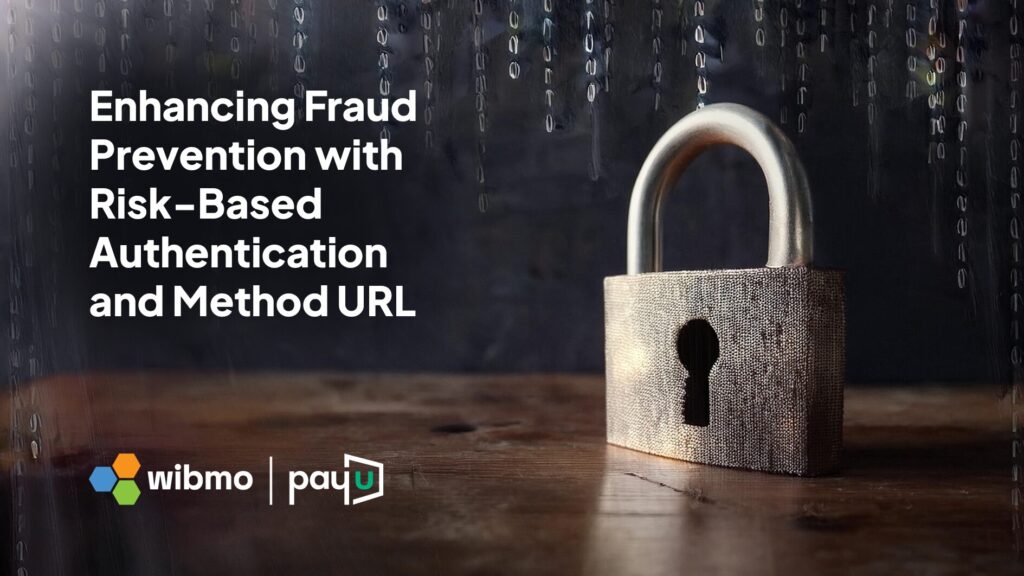Preventing fraud while maintaining a seamless user experience is crucial for merchants and issuers alike in the rapidly evolving digital payment landscape. A key way to strengthen fraud prevention is by gathering more device and browser characteristics before authentication. This can be achieved through Risk-Based Authentication (RBA), Browser Fingerprinting, and the use of Method URL as part of the EMV 3DS protocol.
Let’s explore how these elements work together to improve security and reduce fraud.
The Role of Risk-Based Authentication (RBA)
Risk-Based Authentication (RBA) dynamically assesses each transaction’s risk level based on multiple factors, such as device characteristics, location, and user behaviour. Instead of applying a blanket security protocol for all transactions, RBA allows issuers to adjust the level of authentication required based on the perceived risk. This improves fraud detection while minimizing friction for low-risk transactions, thereby creating a better user experience.
Browser Fingerprinting: A Core Element of Fraud Detection
Browser fingerprinting is a technique used to collect unique information from a user’s browser. This includes data like the device’s operating system, browser version, plugins, IP address, screen resolution, and more. By building a unique profile of the user’s environment, issuers can detect anomalies that may indicate fraud, such as sudden changes in the user’s device or location. However, to leverage this information effectively, additional data must be captured early in the transaction flow, which is where Method URL comes into play.
Understanding Method URL
Method URL is a critical step of the EMV 3DS protocol. It enables issuers to collect additional browser information during the early stages of the authentication process. This step, which occurs before the authentication request is fully processed, provides vital data that can enhance RBA and fraud prevention measures.
How Method URL Works:
- Issuer Provides URL: The issuer provides a Method URL to the directory servers along with ACS URL.
- Merchant Integration: The merchant integrates the Method URL into their checkout process.
- Data Request: When a customer makes a transaction, 3DSS sends Method URL request to ACS to collect browser data.
- Data Collection: ACS collects various device and browser data (such as IP address, device type, and operating system etc) and keeps it ready to evaluate risk.
- Risk Assessment: The issuer uses the collected data to assess the transaction’s risk level. Based on this assessment, they decide whether to approve the transaction immediately or prompt the customer for additional authentication.
- Authentication Decision: The issuer either allows the transaction or requests further steps if the risk level is deemed high.
Benefits of Method URL in Fraud Prevention
The use of Method URL offers several benefits for both issuers and merchants in combating fraud:
- Increased Authentication Success Rates: By collecting more detailed browser and device information upfront, the issuer can make more accurate risk assessments, leading to higher authentication success rates.
- Reduced Customer Abandonment: A more precise risk-based approach means fewer unnecessary challenges to the customer, reducing the chance of abandonment due to complex authentication steps.
- Improved User Experience: Method URL enables smoother transactions for low-risk customers, enhancing the overall user experience while still ensuring security.
- Enhanced Fraud Prevention: By gathering additional data points early in the process, issuers can identify potential fraud indicators before authentication, stopping fraudulent transactions before they occur.
Best Practices for Implementing Method URL
To maximize the benefits of Method URL, issuers and merchants should follow these best practices:
- Early Invocation: Run the Method URL as soon as possible after receiving the customer’s card number to minimize delays and improve the flow of the transaction.
- Accurate BIN Specification: Ensure that the correct BIN (Bank Identification Number) is provided in the Device Data Collection (DDC) call to enhance the accuracy of the risk assessment.
- Error Handling: Implement robust error handling to avoid transaction failures due to issues with the Method URL handling.
- Thorough Testing: Test the integration of Method URL thoroughly to ensure it functions correctly and does not negatively impact the checkout process.
Integrating Wibmo Protect
Wibmo Protect is an advanced fraud prevention solution that seamlessly integrates with RBA, Browser Fingerprinting, and Method URL to provide an additional layer of security. By leveraging Wibmo Protect, issuers and merchants can benefit from:
- Real-Time Fraud Detection: Wibmo Protect uses machine learning algorithms to analyze transaction data in real-time, identifying and mitigating potential fraud threats instantly.
- Comprehensive Risk Assessment: Combining data from Browser Fingerprinting and Method URL, Wibmo Protect enhances the accuracy of risk assessments, ensuring that only genuine transactions are approved.
- Seamless User Experience: With Wibmo Protect, low-risk transactions are processed smoothly, reducing friction for customers and improving overall satisfaction.
Conclusion
Method URL, when integrated properly, significantly improves fraud prevention by enabling issuers to gather vital browser and device characteristics early in the authentication process. By leveraging this data for risk-based authentication, both issuers and merchants can reduce fraud, improve authentication success rates, and provide a better user experience for customers. As fraud prevention becomes more complex, using tools like Method URL and Wibmo Protect is essential for staying ahead of emerging threats and ensuring secure, frictionless transactions.

